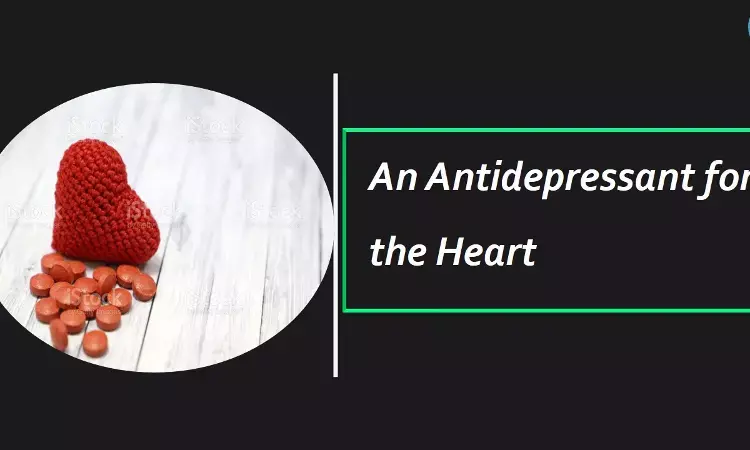- Home
- Medical news & Guidelines
- Anesthesiology
- Cardiology and CTVS
- Critical Care
- Dentistry
- Dermatology
- Diabetes and Endocrinology
- ENT
- Gastroenterology
- Medicine
- Nephrology
- Neurology
- Obstretics-Gynaecology
- Oncology
- Ophthalmology
- Orthopaedics
- Pediatrics-Neonatology
- Psychiatry
- Pulmonology
- Radiology
- Surgery
- Urology
- Laboratory Medicine
- Diet
- Nursing
- Paramedical
- Physiotherapy
- Health news
- Fact Check
- Bone Health Fact Check
- Brain Health Fact Check
- Cancer Related Fact Check
- Child Care Fact Check
- Dental and oral health fact check
- Diabetes and metabolic health fact check
- Diet and Nutrition Fact Check
- Eye and ENT Care Fact Check
- Fitness fact check
- Gut health fact check
- Heart health fact check
- Kidney health fact check
- Medical education fact check
- Men's health fact check
- Respiratory fact check
- Skin and hair care fact check
- Vaccine and Immunization fact check
- Women's health fact check
- AYUSH
- State News
- Andaman and Nicobar Islands
- Andhra Pradesh
- Arunachal Pradesh
- Assam
- Bihar
- Chandigarh
- Chattisgarh
- Dadra and Nagar Haveli
- Daman and Diu
- Delhi
- Goa
- Gujarat
- Haryana
- Himachal Pradesh
- Jammu & Kashmir
- Jharkhand
- Karnataka
- Kerala
- Ladakh
- Lakshadweep
- Madhya Pradesh
- Maharashtra
- Manipur
- Meghalaya
- Mizoram
- Nagaland
- Odisha
- Puducherry
- Punjab
- Rajasthan
- Sikkim
- Tamil Nadu
- Telangana
- Tripura
- Uttar Pradesh
- Uttrakhand
- West Bengal
- Medical Education
- Industry
Antidepressant Paroxetine may attenuate myocardial fibrosis in post MI setting: JAMA

Antidepressant Paroxetine may be worth gold for heart attack patients as it may attenuate myocardial fibrosis in post MI setting, finds JAMA study.
Dysregulation of G-protein–coupled receptor kinases (GRK) plays a central role in the progression of left ventricular remodeling after ischemic injury. In this regard, researchers Piilgrim et al explored the role of selective serotonin reuptake inhibitor paroxetine which has an off target inhibitory role on GRK2, in mitigating adverse left ventricular remodeling in patients presenting with acute anterior myocardial infarction.
The authors found that treatment with paroxetine did not improve left ventricular ejection fraction compared with placebo but patients in the paroxetine arm experienced a greater reduction in late gadolinium enhancement compared with those receiving placebo, indicating attenuation of myocardial fibrosis. The findings were published today in JAMA Cardiology.
Earlier in a mouse model, paroxetine treatment has been demonstrated to mitigate sympathetic overdrive, reverse myocardial remodeling, and improve left ventricular function. The aim of the present study was to prospectively investigate the efficacy of paroxetine-mediated GRK2 inhibition to mitigate adverse left ventricular remodeling in patients presenting with acute myocardial infarction.
In this double-blind, placebo-controlled randomized clinical trial patients with acute anterior ST-segment elevation myocardial infarction with left ventricular ejection fraction (LVEF) of 45% or less were randomly allocated to 2 study arms. Patients in the experimental arm received 20 mg of paroxetine daily; patients in the control group received a placebo daily. Both treatments were provided for 12 weeks.
The primary end point was the difference in patient-level improvement of LVEF between baseline and 12 weeks as assessed by cardiac magnetic resonance tomography. Secondary end points were changes in left ventricular dimensions and late gadolinium enhancement between baseline and follow-up.
At the end of trial period, the extent of LVEF recovery was comparable in patients treated with paroxetine or placebo. There were no significant differences in changes of left ventricular dimensions and volumes. In contrast, patients treated with paroxetine had greater reduction in late gadolinium enhancement (by approximately 9%), indicating attenuation of myocardial fibrosis and scar formation after myocardial infarction.
In contrast with the mouse model, in which treatment was started 2 weeks after inducing acute myocardial infarction, patients in this study were included 48 to 96 hours after primary percutaneous coronary revascularization and paroxetine was started on top of guideline-directed optimal medical therapy less than 7 days after percutaneous coronary revascularization.
In conclusion, in this randomized clinical trial, a 3-month course of paroxetine treatment following acute myocardial infarction did not lead to an improvement in left ventricular ejection fraction compared with placebo but a beneficial effect on late gadolinium enhancement paves way for future research in this arena.
Source: JAMA Cardiology: doi:10.1001/jamacardio.2021.2247
MBBS, MD , DM Cardiology
Dr Abhimanyu Uppal completed his M. B. B. S and M. D. in internal medicine from the SMS Medical College in Jaipur. He got selected for D. M. Cardiology course in the prestigious G. B. Pant Institute, New Delhi in 2017. After completing his D. M. Degree he continues to work as Post DM senior resident in G. B. pant hospital. He is actively involved in various research activities of the department and has assisted and performed a multitude of cardiac procedures under the guidance of esteemed faculty of this Institute. He can be contacted at editorial@medicaldialogues.in.
Dr Kamal Kant Kohli-MBBS, DTCD- a chest specialist with more than 30 years of practice and a flair for writing clinical articles, Dr Kamal Kant Kohli joined Medical Dialogues as a Chief Editor of Medical News. Besides writing articles, as an editor, he proofreads and verifies all the medical content published on Medical Dialogues including those coming from journals, studies,medical conferences,guidelines etc. Email: drkohli@medicaldialogues.in. Contact no. 011-43720751


